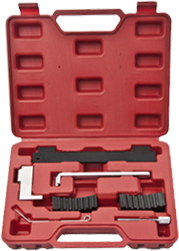Understanding the Significance of Threaded Fasteners
Threaded fasteners play a crucial role in various industries, providing the necessary stability and integrity to assembled components. However, over time, threads can become worn, damaged, or corroded, leading to compromised connections. In such instances, the use of a thread repair tool becomes imperative to restore the functionality and strength of these fasteners.
The Versatility of Thread Repair Tools
A thread repair tool is a versatile instrument designed to salvage damaged threads, whether on bolts, screws, or other fasteners. These tools come in various types, such as taps, dies, and inserts, each serving a specific purpose. Taps are used to cut new threads, dies help to reshape existing threads, and inserts provide reinforcement for weakened threads. The versatility of these tools makes them essential for maintaining the structural integrity of machinery, vehicles, and other threaded applications.
Benefits and Applications of Thread Repair Tools
3.1 Enhanced Durability and Longevity
One of the primary benefits of using a thread repair tool is the restoration of the fastener's original strength and integrity. By repairing damaged threads, these tools eliminate the need for costly replacements, contributing to significant cost savings. This enhanced durability ensures that the repaired components can withstand the rigors of daily use, ultimately prolonging the lifespan of the entire assembly.
3.2 Time and Cost Efficiency
Thread repair tools offer a cost-effective solution compared to the alternative of replacing damaged fasteners. The process of thread repair is generally quicker and less labor-intensive, minimizing downtime and production delays. Whether in an industrial setting or a DIY project, the time and cost efficiency provided by these tools make them a valuable asset for professionals and hobbyists alike.
3.3 Environmental Impact
The environmental impact of thread repair tools is another aspect worth considering. By promoting the repair and reuse of fasteners, these tools contribute to the reduction of waste generated by discarded components. This aligns with the growing emphasis on sustainability and responsible resource management in various industries. Choosing thread repair over replacement is a small yet impactful step towards a more eco-friendly approach to maintenance and repair.
Conclusion:
In conclusion, the use of thread repair tools is paramount in maintaining the reliability and functionality of threaded fasteners across diverse applications. Understanding the significance, versatility, and benefits of these tools empowers individuals and industries to make informed decisions when faced with the challenges of damaged threads. As we continue to seek efficient and sustainable solutions in engineering and maintenance practices, the role of thread repair tools becomes increasingly vital in preserving the strength and longevity of our interconnected world.
 EN
EN


















